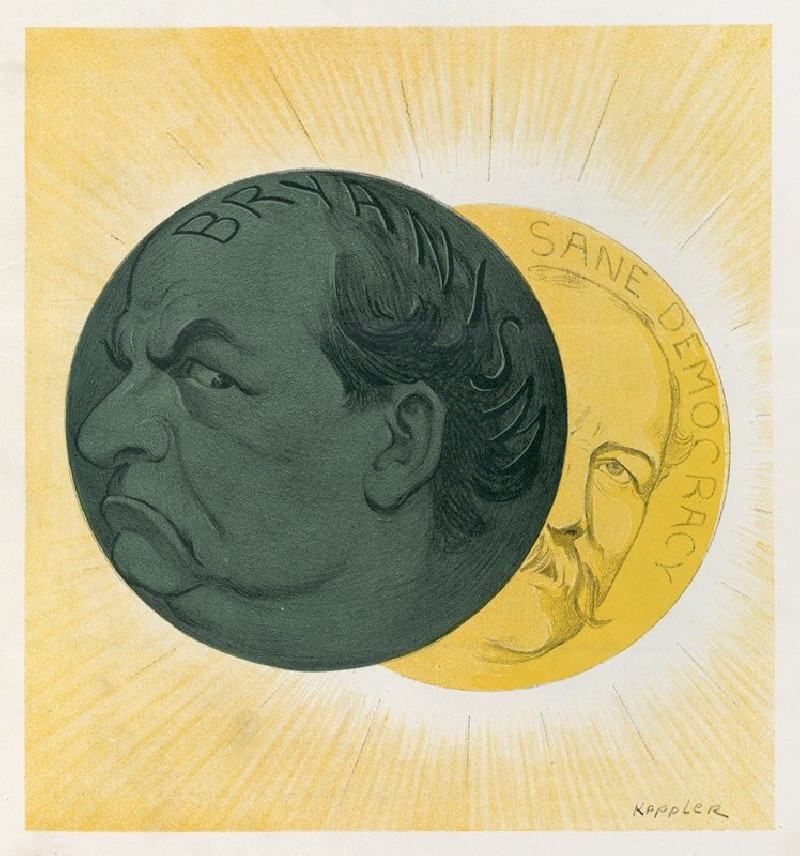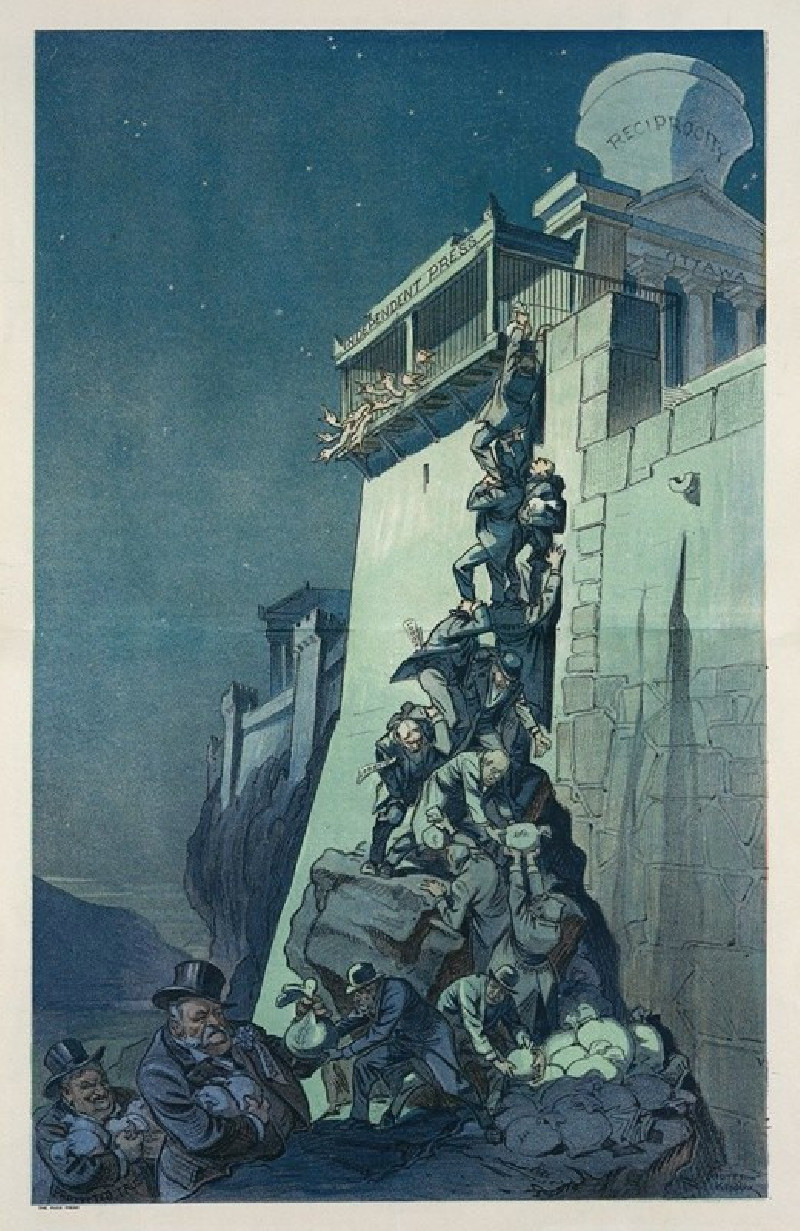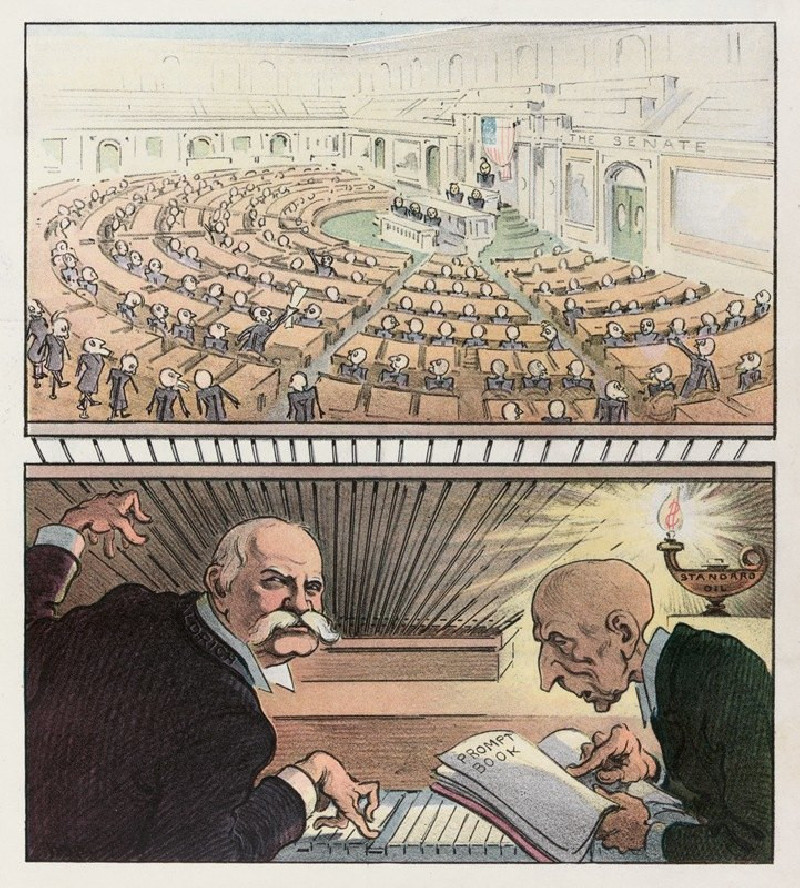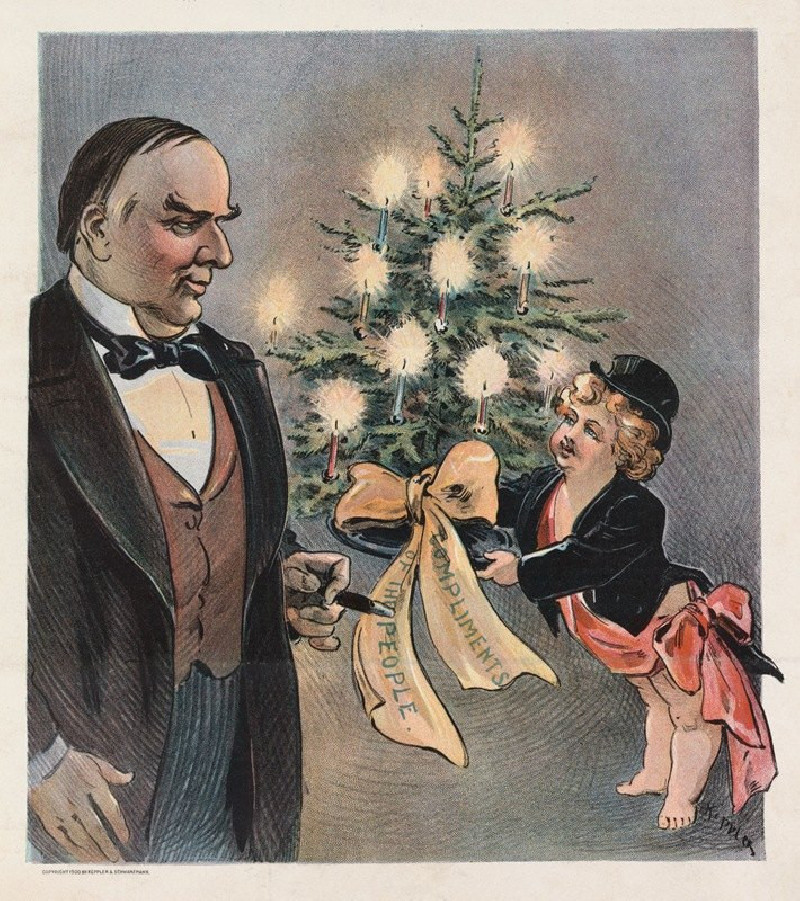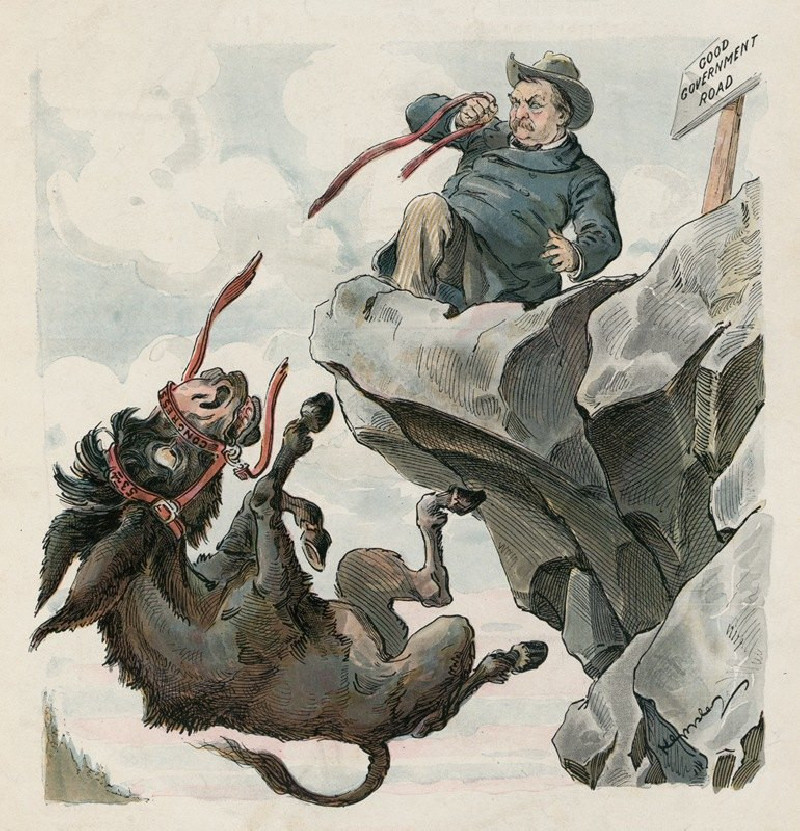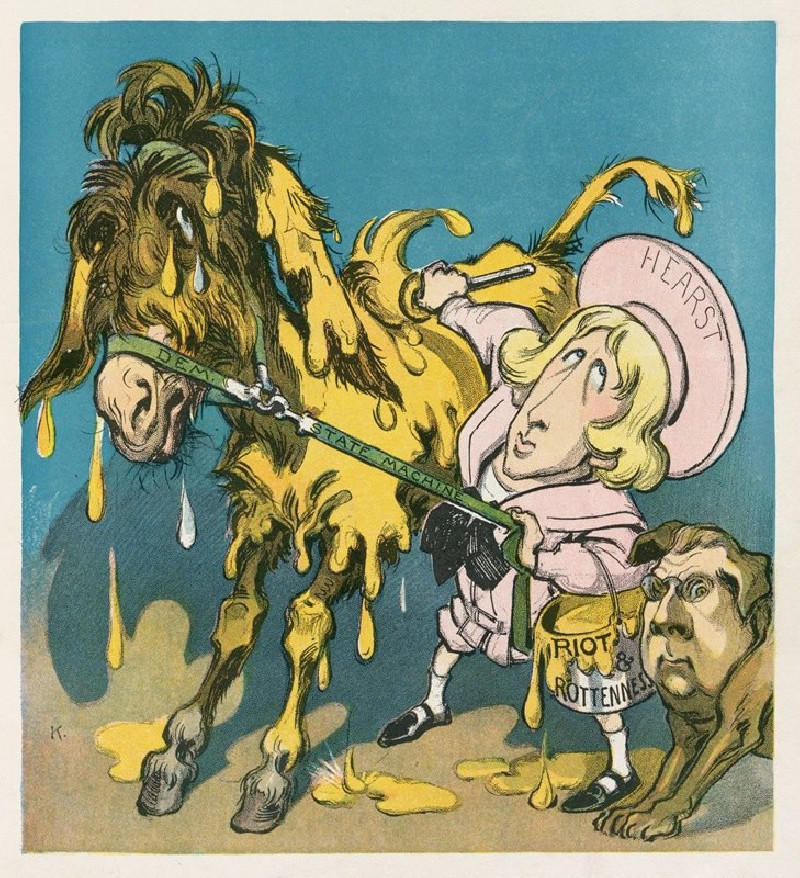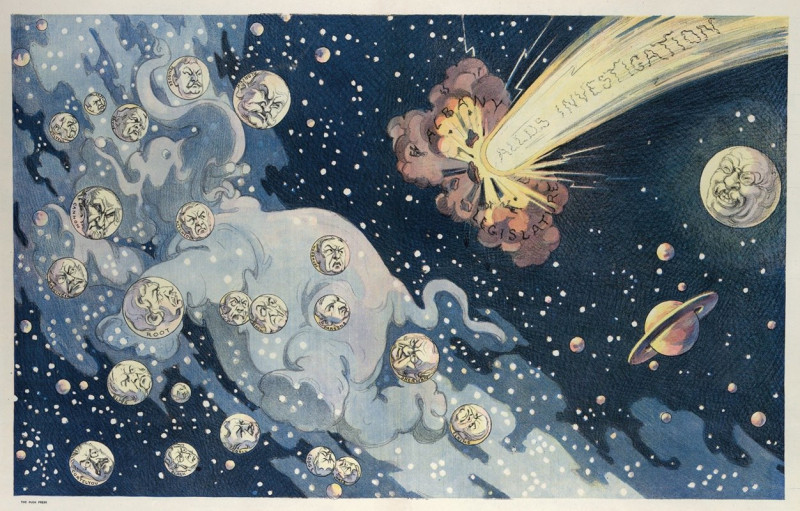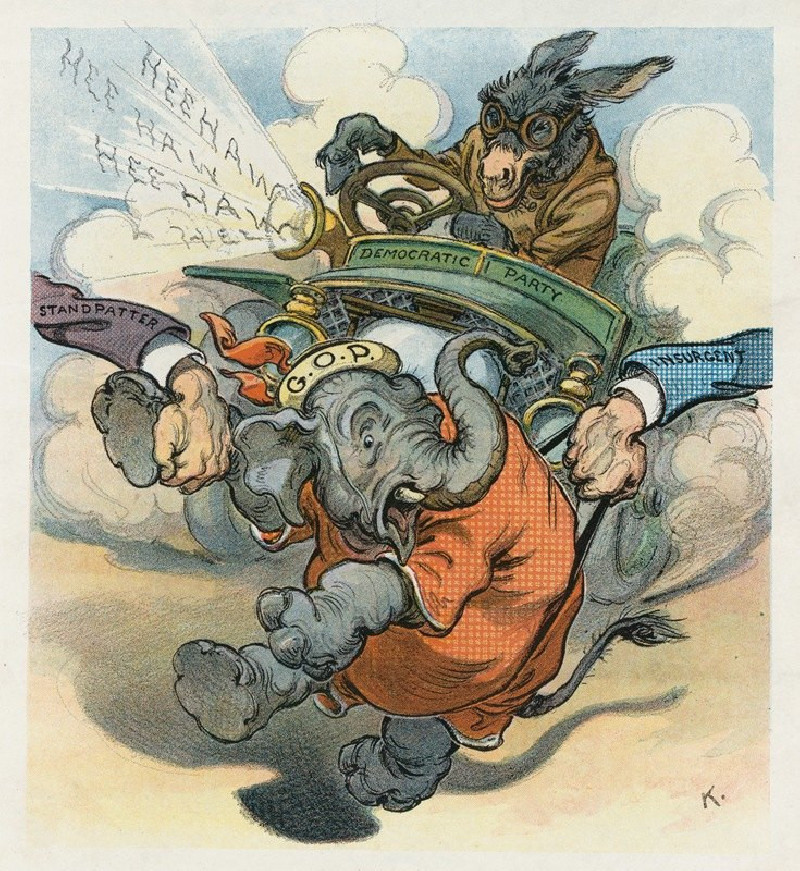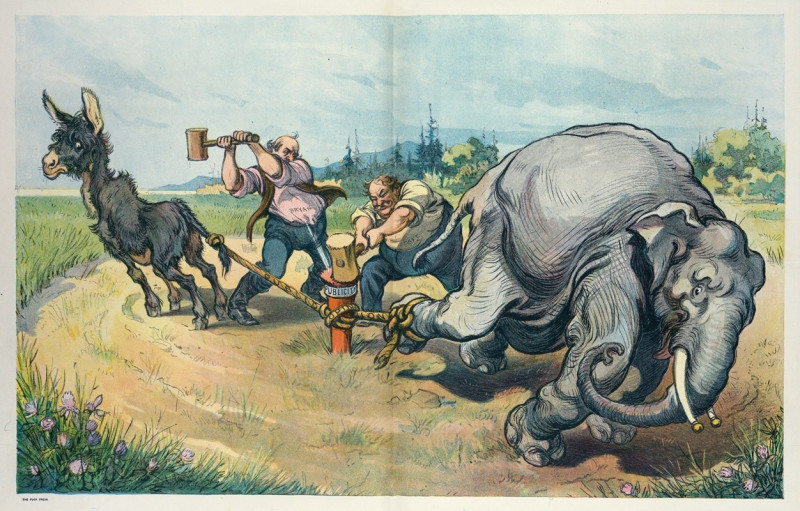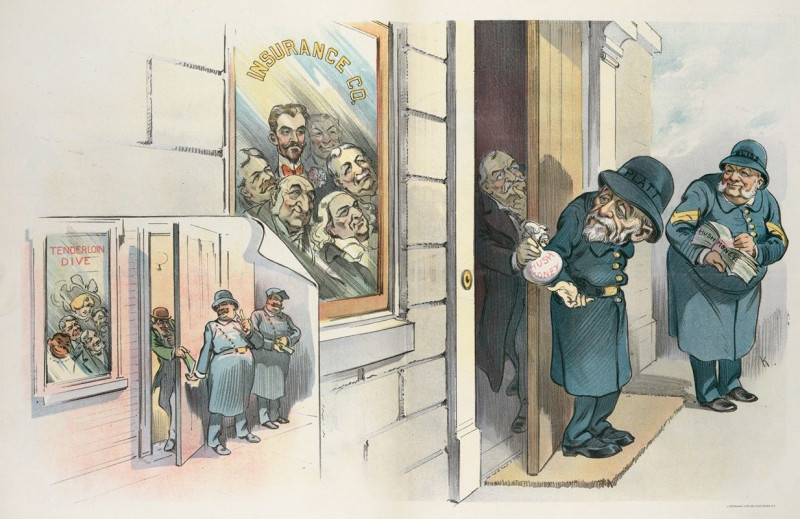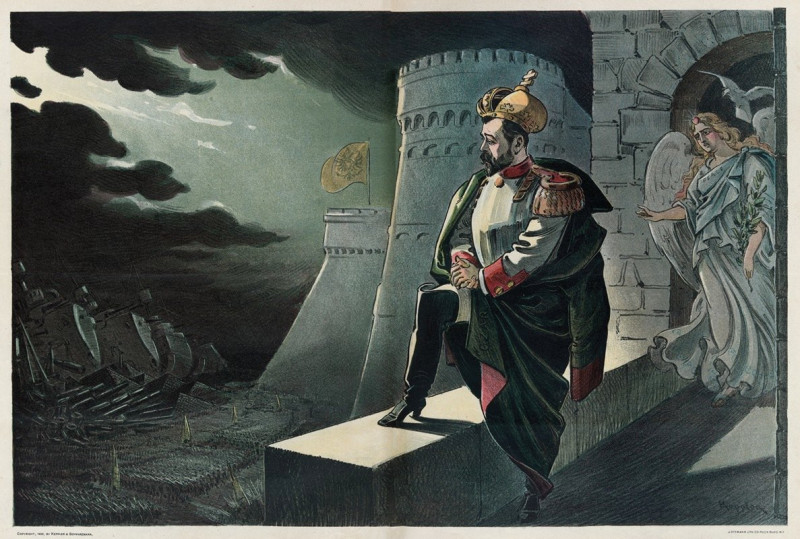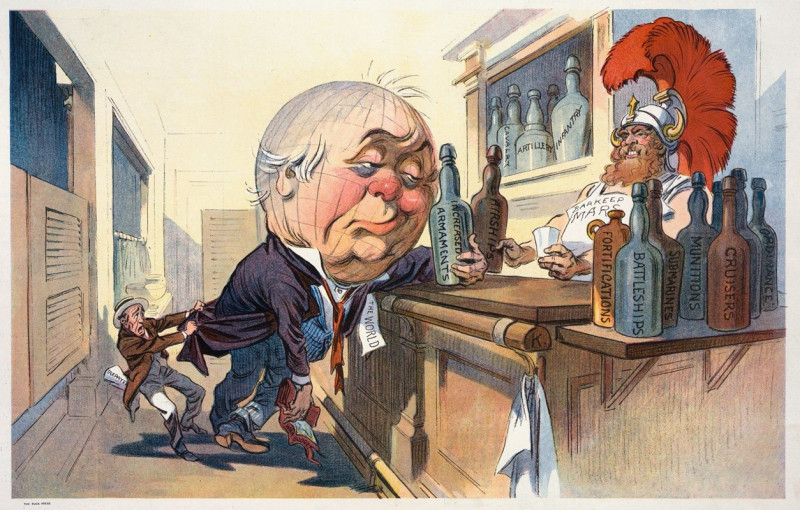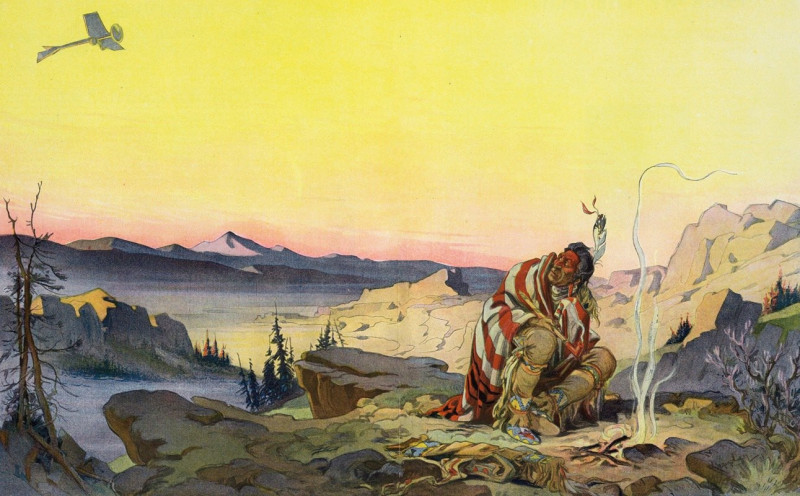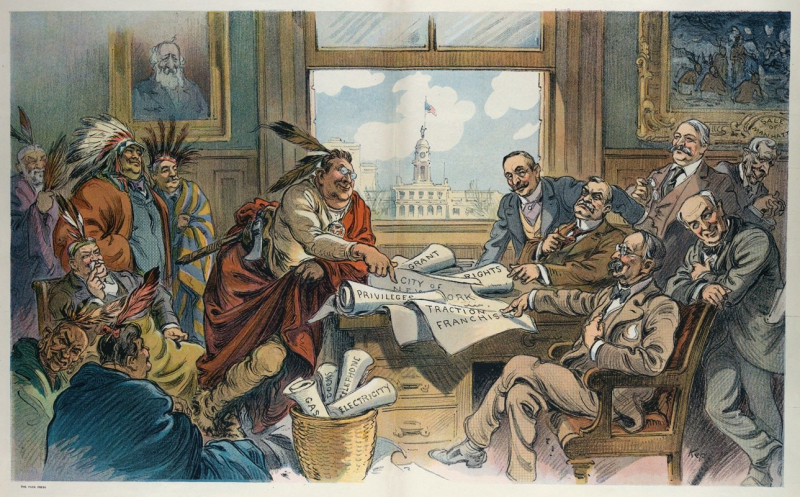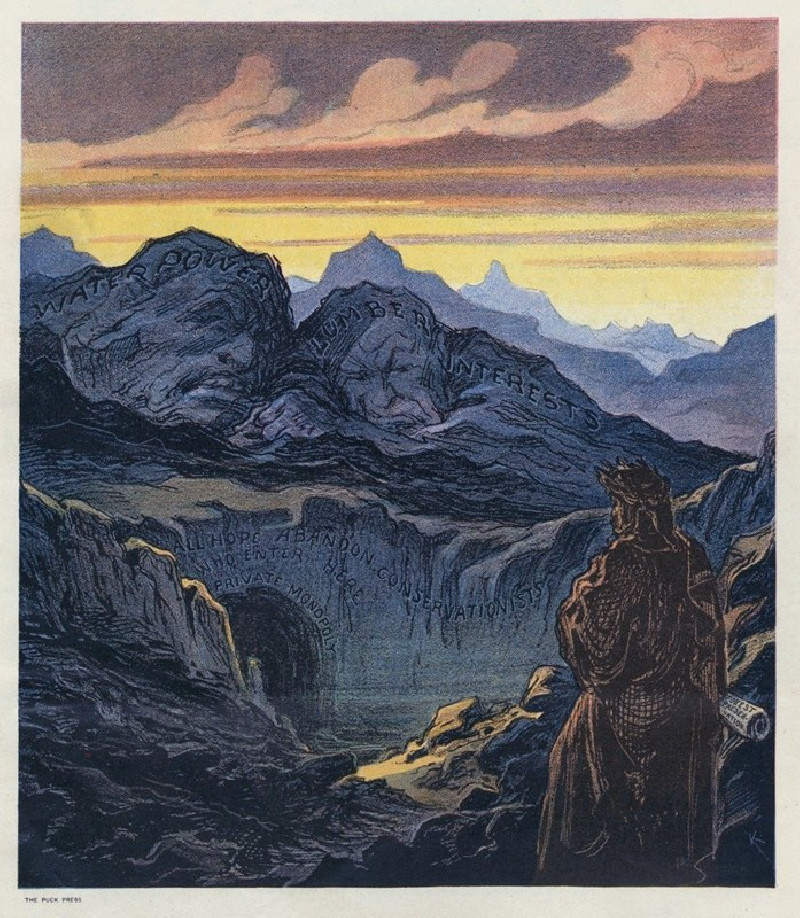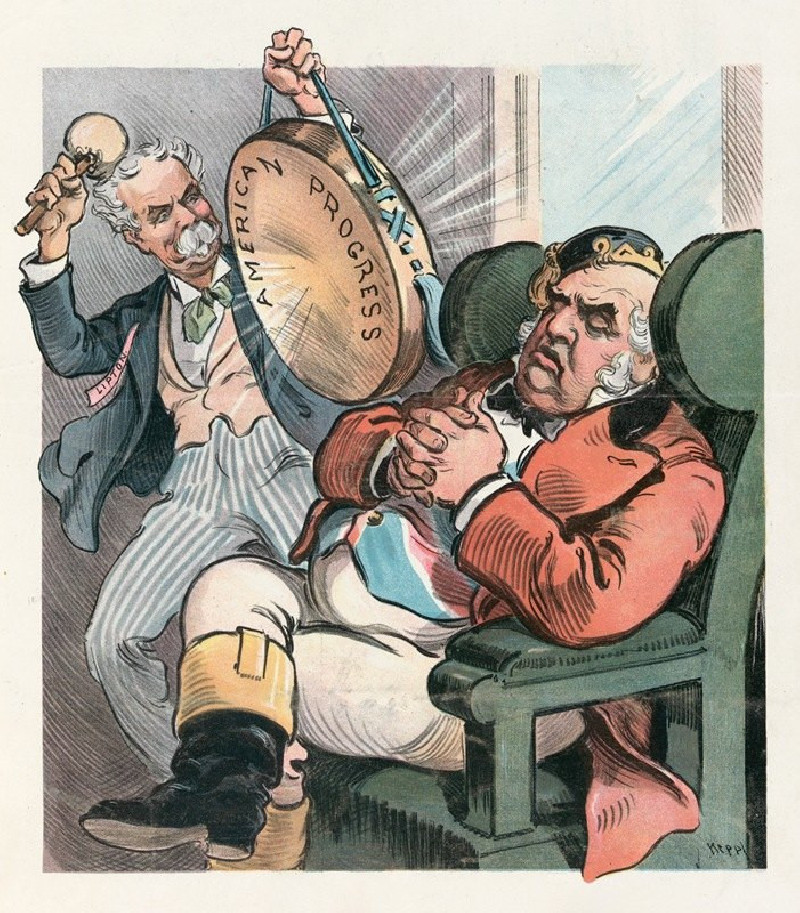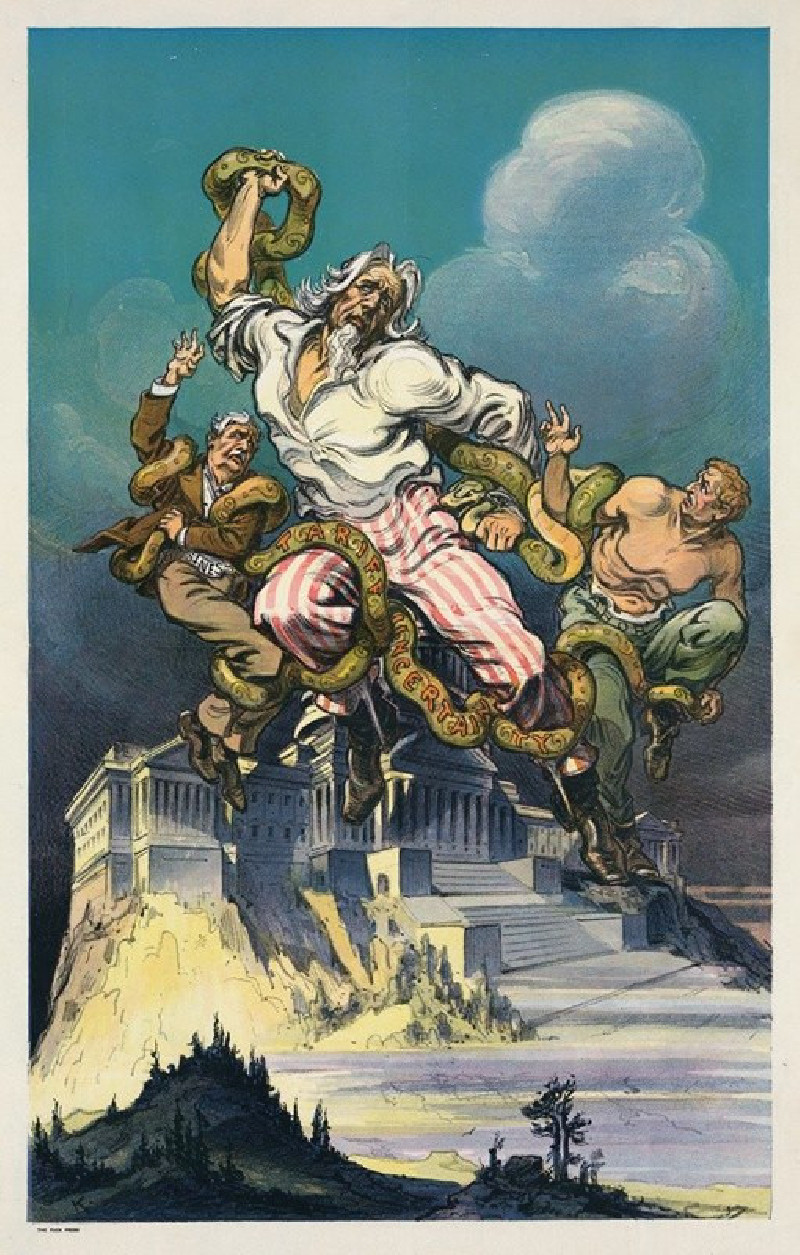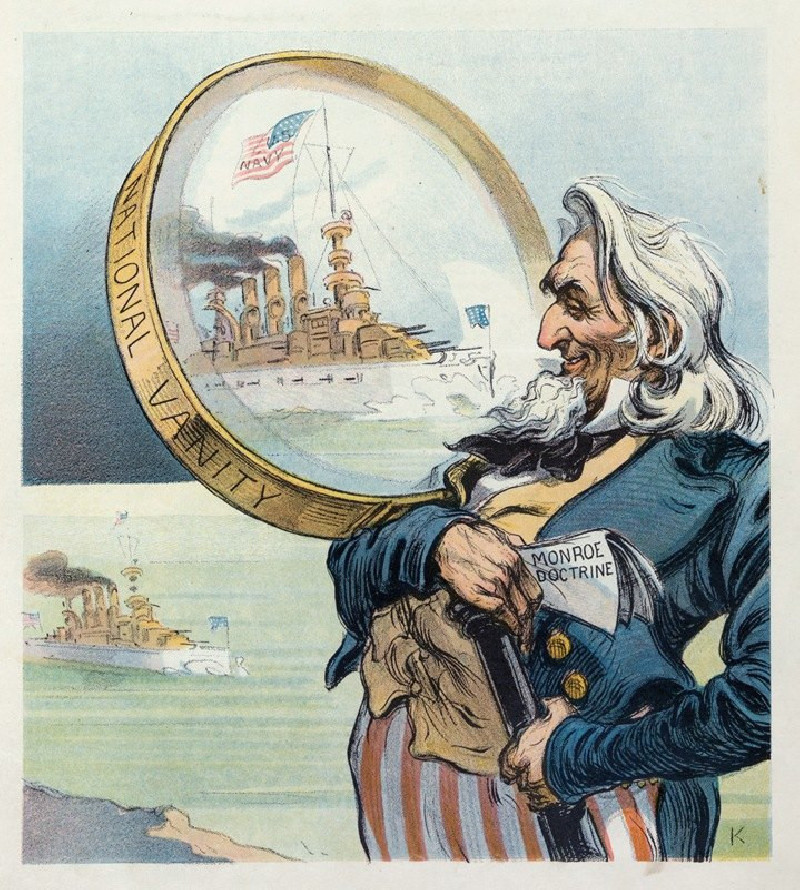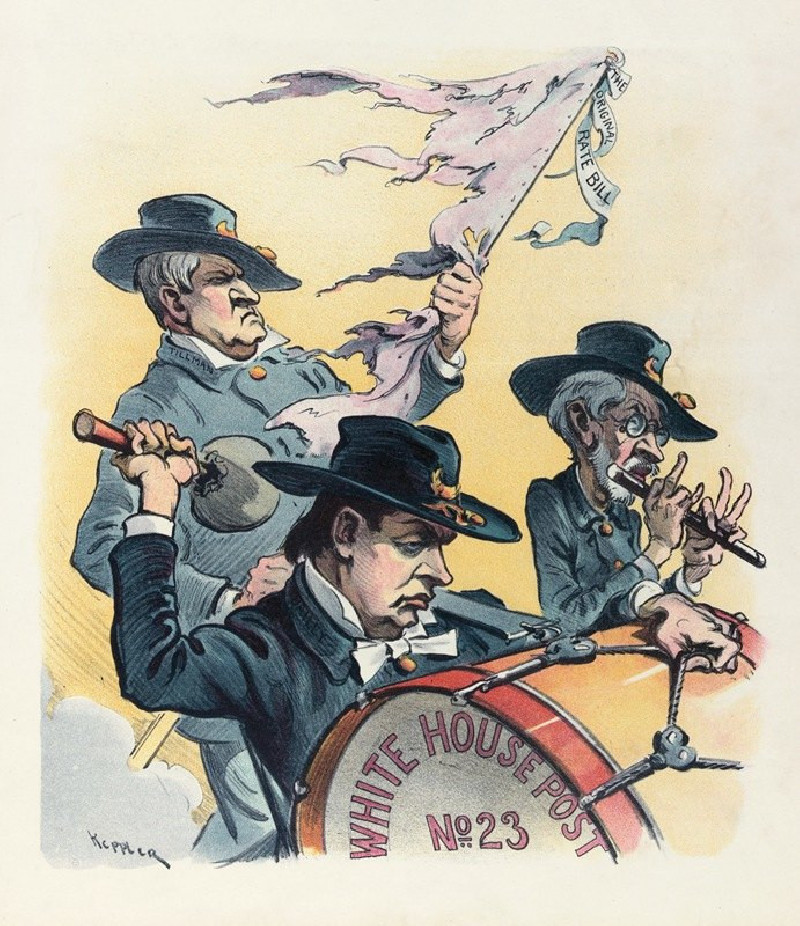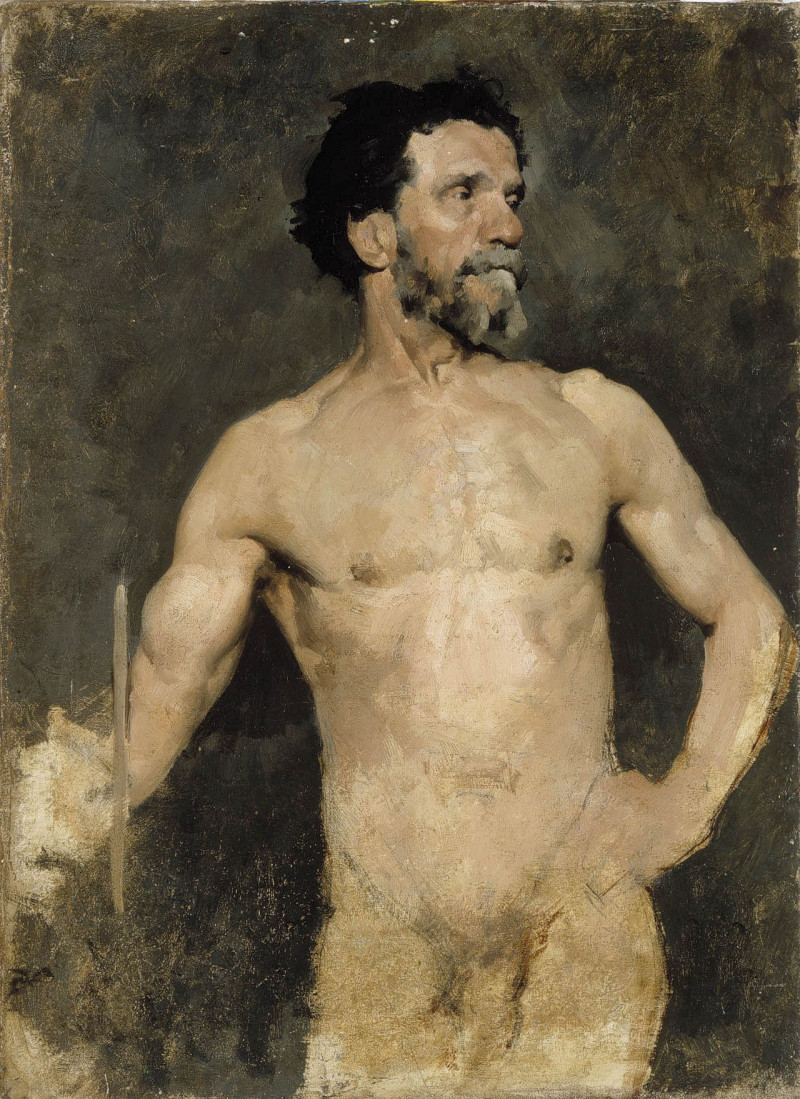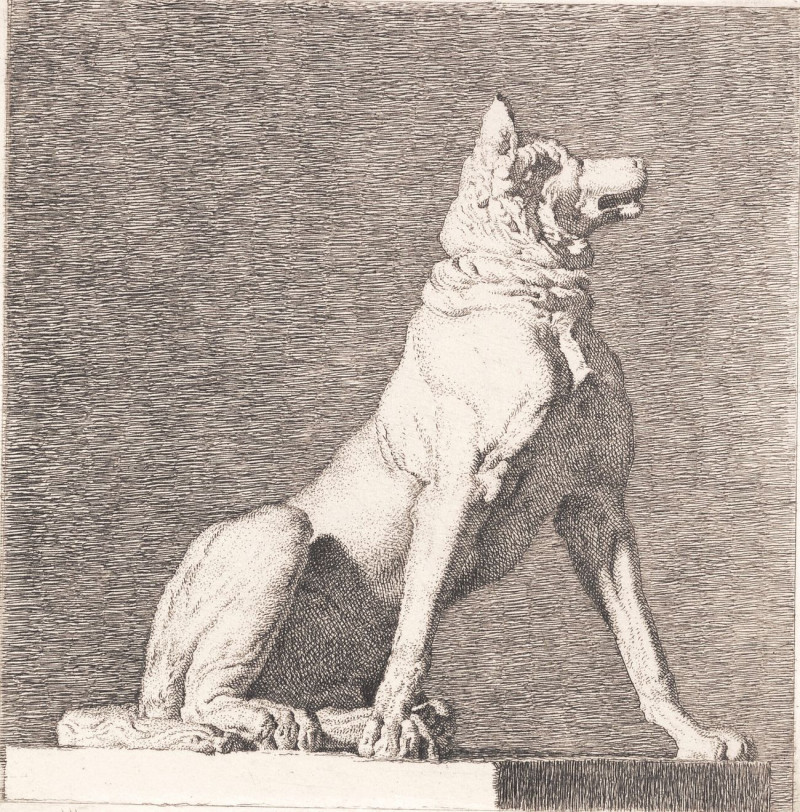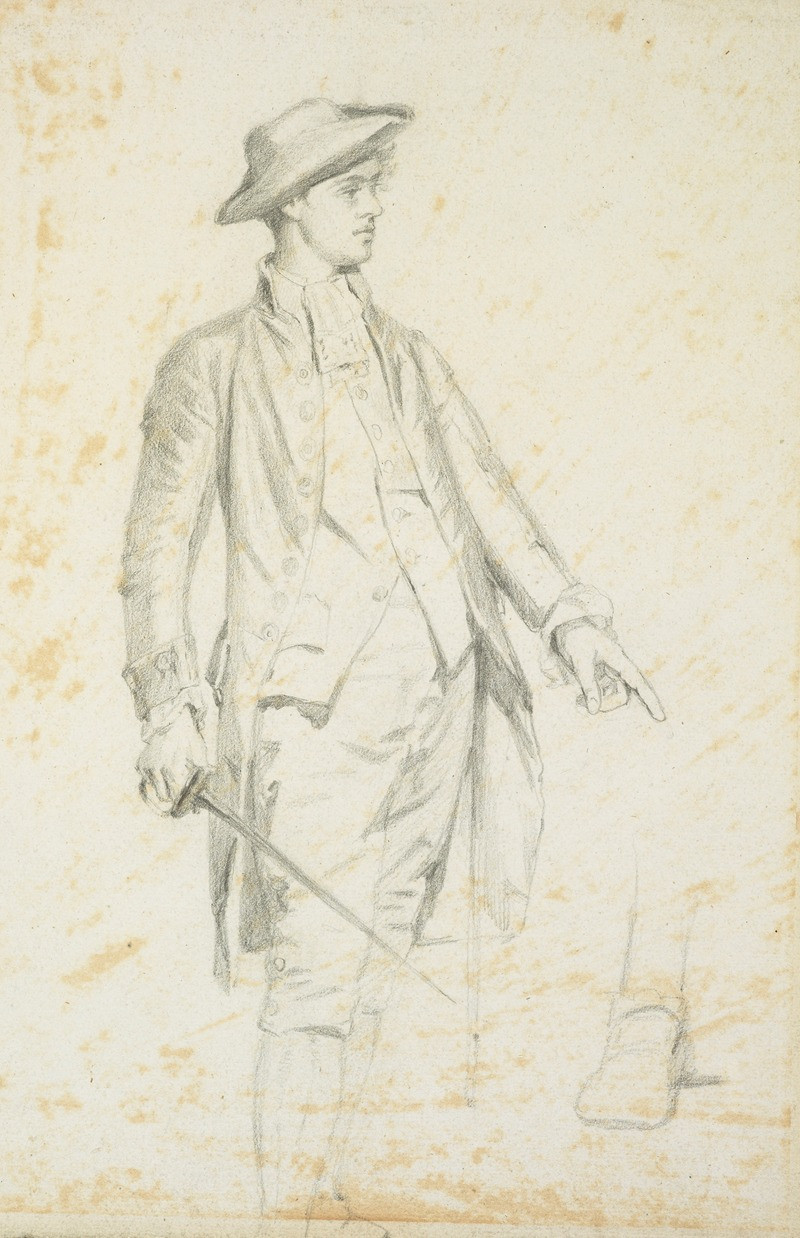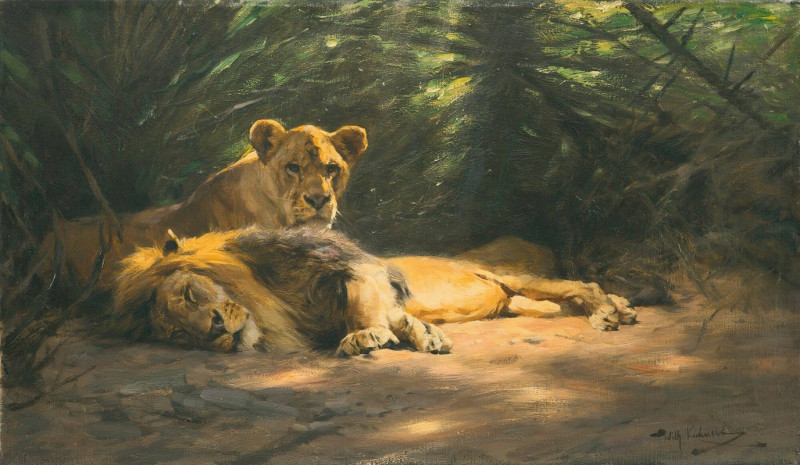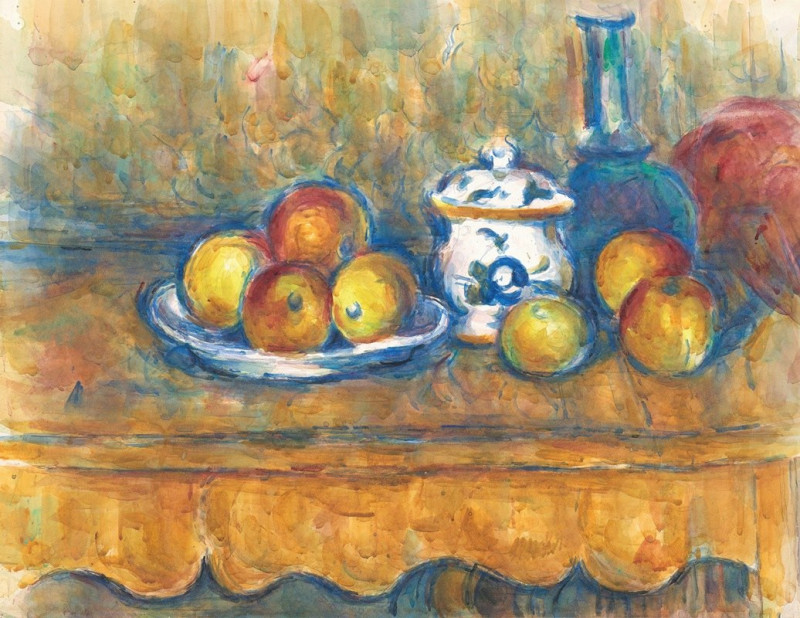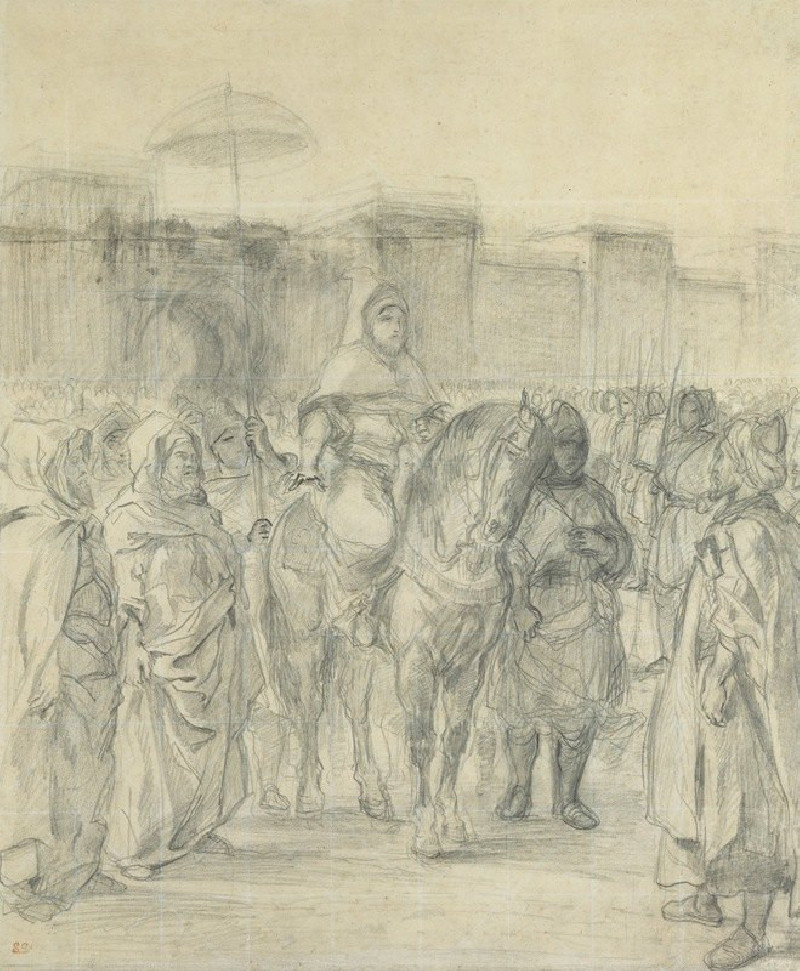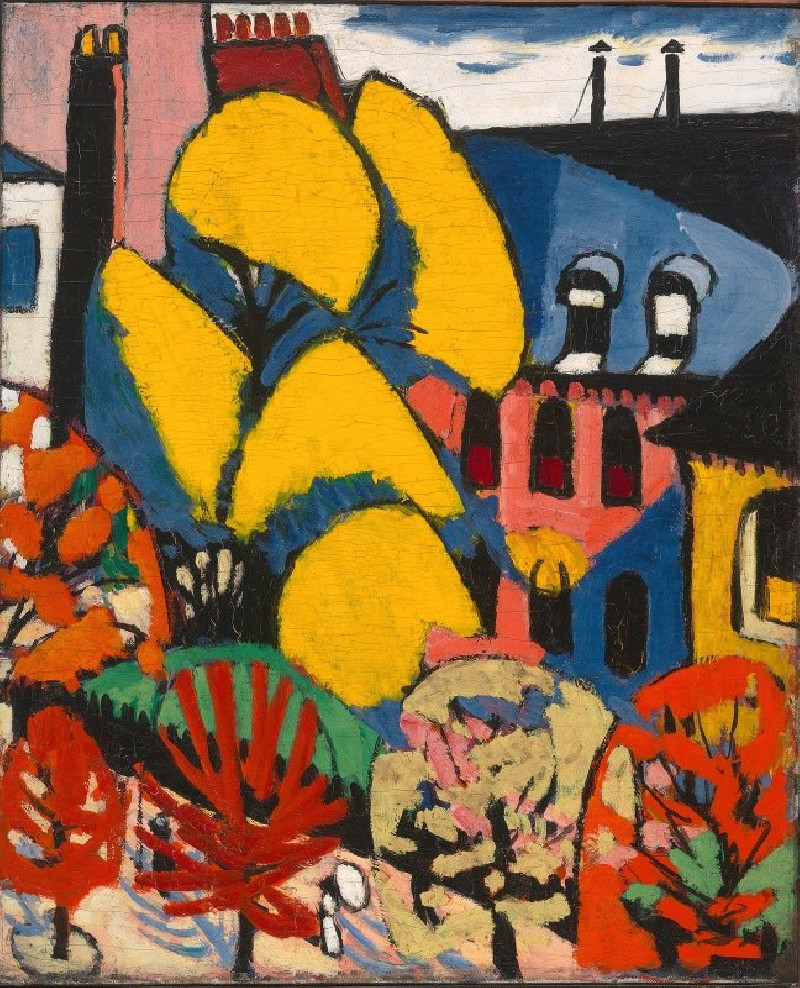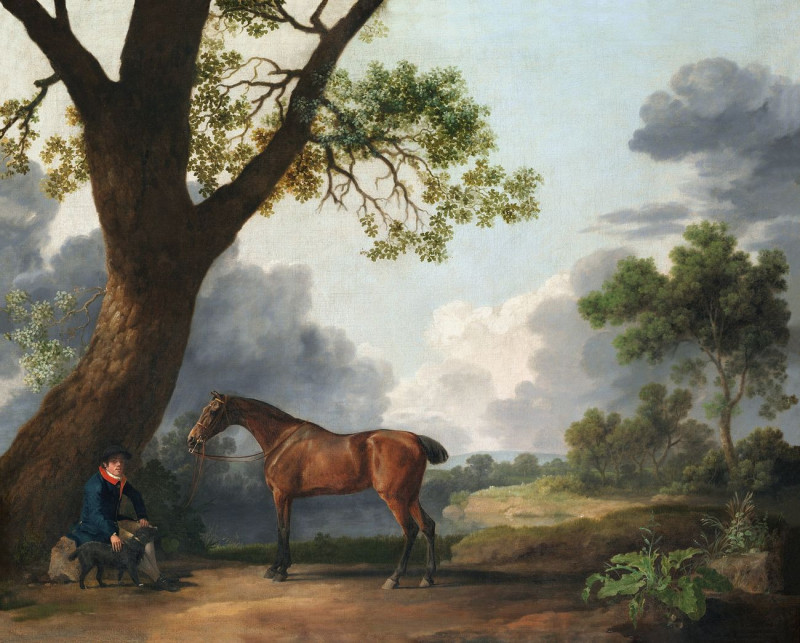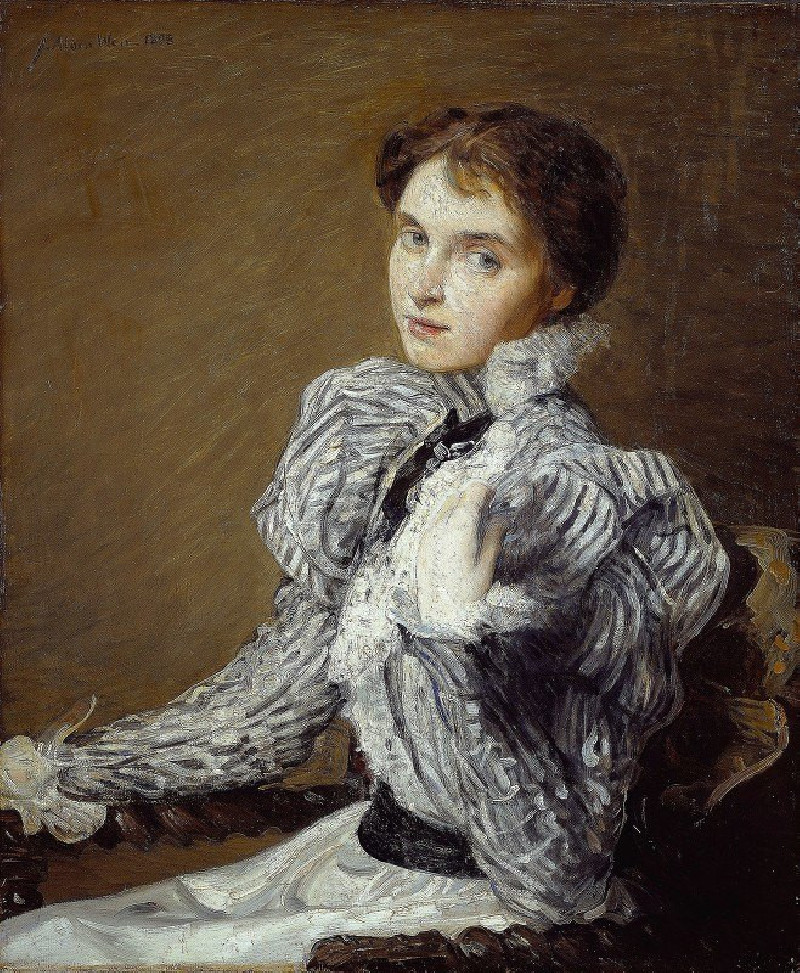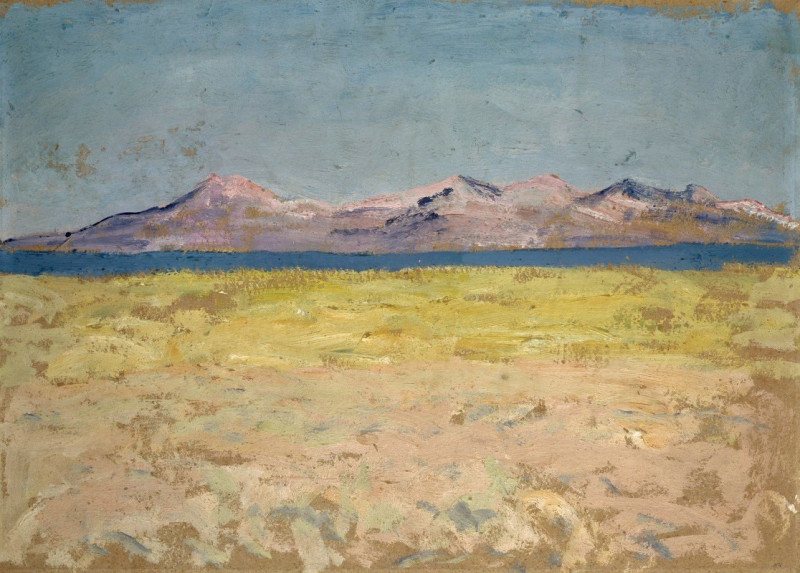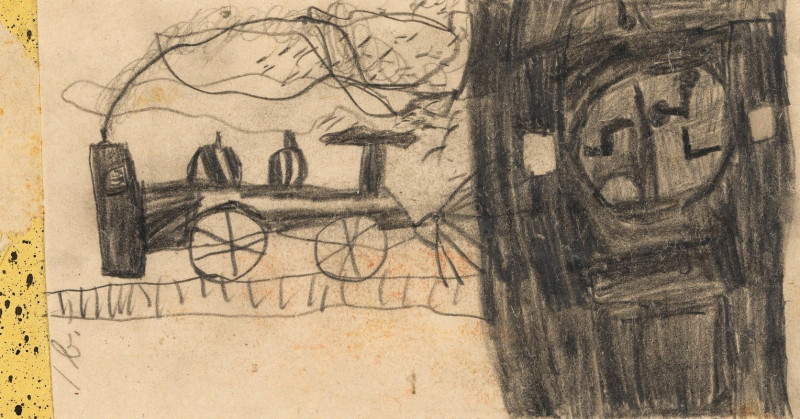The passing of the eclipse (1904)
Technique: Giclée quality print
Recommended by our customers
More about this artwork
Udo Keppler's 1904 piece, "The Passing of the Eclipse," presents a vivid and symbolic portrayal of political sentiments of the time. This striking artwork captures a moment of transition, depicting the faces of two men, embossed within celestial spheres, against a backdrop of radiating light beams.The painting features two primary elements – the dark, foreboding face labeled "BRYAN" on a greenish sphere, representing William Jennings Bryan, and a luminous, serene face labeled "SANE DEMOCRACY" on a golden sphere. The representation of Bryan suggests a fading influence, much like an eclipse being surpassed by the brighter, emerging presence of 'Sane Democracy.'The use of color effectively contrasts the ideas of obscuration and enlightenment. The dark green sphere with Bryan's grim expression signifies a period or ideology that is passing away, perhaps referencing his declining political influence after multiple unsuccessful presidential bids. In contrast, the golden sphere symbolizes hope, rationality, and a more centrist approach to democracy as seen through the serene expression on the second figure."The Passing of the Eclipse" is not just a visual treat but also a piece rich in political commentary, reflecting the shifting landscapes and public perceptions of its time.
Delivery
Returns
Udo J. Keppler, since 1894. known as Joseph Keppler, Jr., was an American political cartoonist, publisher, and Native American advocate. The son of cartoonist Joseph Keppler (1838–1894), who founded Puck magazine, the younger Keppler also contributed to cartoons, and after his father's death became co-owner of the magazine under the name Joseph Keppler. He was also a collector of Native American artifacts.

